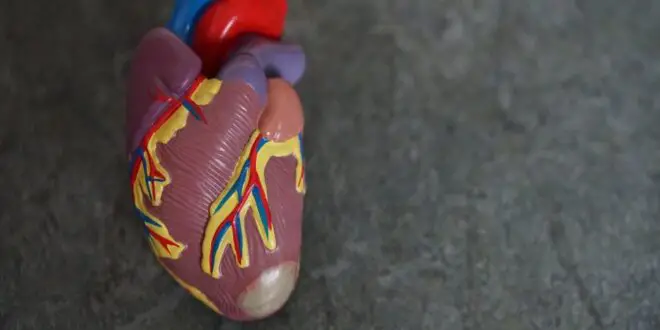Studying other animals is crucial in understanding how human anatomy works, and that is the source of the pig heart vs human heart debate.
There have been many studies into pigs’ hearts since they are so much closer to humans anatomically, and there are curiosities on why.
Recent medical research has explored using pig’s hearts for human transfusions, but how feasible is this?
What are the similarities between human and pig hears? Let us get into the details of this article to answer these questions and more;
Pig Heart Vs. Human Heart
Pig hearts are more similar to human hearts than any other animal, which is why they are used in most anatomy studies. Several significant similarities and differences distinguish the two.
Similarities Between Pig Hearts And Human Hearts
If you have dissected a heart in school to learn about human heart anatomy, chances are you used a pig’s heart.
This is a clear sign of how similar the anatomy of the two hearts is, and here are some detailed similarities between them.
1. Size
Human and pig heart sizes are about the same range and differ depending on the specific organism’s age. Adult human hearts are about the size of two folded fists, the same estimate for an adult pig.
The human heart weighs about 10 ounces, and it differs depending on your body size and weight, which is the same for pigs.
Bigger pigs will have bigger hearts, but most average-sized adult pigs have hearts of approximately 10 ounces.
2. Number of Chambers
The hearts of pigs and humans both have a similar number of chambers, which means they have identical blood flow and oxygenation processes. There are two upper chambers, the atrium, and two lower chambers, the ventricles.
One atrium and ventricle are on the left, and the other on the right. The right atrium gets deoxygenated blood from the body through the vena cava and pumps the blood into the right ventricle below it.
The right ventricle pushes the blood into the lungs, where it gets oxygenated. The blood then moves through the pulmonary vein into the left atrium, which pumps it into the left ventricle, which is slightly smaller and pumps blood to the body.
This structure and blood flow pattern are similar in humans and pigs, although slight differences exist in the specific number of veins and arteries involved.
3. Number of Valves
The valves operate like doors in the heart and blood vessels, and they help prevent backflow of blood.
They allow blood to move in only one direction, which reduces the workload on the heart, and it is present in different numbers and forms in most organisms.
Both the human and pig hearts have four valves. These include the pulmonary, aortic, tricuspid, and mitral valves. These valves open and close rhythmically to manage blood form, which causes the heartbeat.
The tricuspid valve is between the R ventricle and atrium, and the mitral valve is between the L atrium and ventricle.
The aortic valve is found between the L ventricle and the aorta, while the pulmonary valve is located between the L ventricle and pulmonary arteries.
4. The Aorta
The aorta is a big cone-shaped vessel that carries blood back to the body after oxygenation. It is the primary artery that starts from the heart and branches outwards to the rest of the body. The human and pig hearts share an aorta’s structure, tissue composition, and shape.
They are similar in all components down to the aortic arch, ascending and descending aorta, aortic root, and abdominal aorta.
The aortic valve is in the same general area in humans and heart pigs, and this uncanny similarity makes the pig’s heart a good study substitute.
5. Blood Vessels
All organisms with blood and a heart have blood vessels, but the pig stands out because it has a similar number and structure of blood vessels as humans. The arteries in humans and pigs carry blood, which is rich in oxygen.
This means they take blood away from the heart. Only the pulmonary arteries have deoxygenated blood, which they carry from the heart to the lungs. Veins carry the blood back to the heart after it has gone through the body.
The coronary arteries serve the same purpose in pigs and humans. They form a network that serves the heart to provide all the nutrients and energy it needs to keep pumping.
Pigs also have other similar arteries to humans, such as the L coronary artery, circumflex artery, R coronary artery, and the left descending artery.
There are so many similarities between human and pig hearts that some doctors use them in surgery.
Changing the whole heart is not possible now, but surgeons often use tissue from pig’s hearts to do heart replacements for humans.
The doctors treat the tissue before using it so that the body assimilates it without an immune response, but it is a common practice.
Many other genetic and functional differences hinder major transplants, but much research is ongoing.
Differences Between The Human And Pig Hearts
The heart is one of the most intricate parts of most living organisms, so the two have many differences despite their similarity. These differences come in the more intricate details of how a pig’s body is designed and what it needs.
Recent research is focused on this to explore the possibility of xenotransplantation. This will allow scientists to transfer organs to humans from other animals. This will help save human lives since transplants like heart transplants can’t save two people.
Both pigs and humans are mammals, so there are many similarities in their cardiovascular system, but not enough.
The heart adapts to give the best service for an organism’s body structure, so let us look at some of the differences the pig’s heart has.
1. Shape
Despite the similarity in size and weight, the human and pig hearts have different shapes. The pig’s heart is more valentine shaped, like a heart emoji. This is oriented to the natural stance of the pig and how it has to pump blood throughout the body.
The human heart, on the other hand, has a trapezoidal shape. It is aligned with the orthograde posture of humans, which means the heart has to pump blood up and down rather than back and forth.
This is a similar case with most animals as those that walk on fours have a valentine-shaped heart while two-legged ones have trapezoidal shapes.
2. The Orientation of the Vena Cava and Coronary Arteries
The inferior and superior vena cava in a pig’s heart connect to the R atrium at right angles. This is because they are going directly toward the back of the pig, as the heart is on the upper part of their body.
The vena cava in the human heart goes into the R atrium in a straight line at 1800. The human heart is more centrally located, so a straight line is an easier connection for the vena cava.
The right and left coronary arteries are the same length in pig’s hearts, producing the interventricular branch. There is no right coronary dominance in the pig’s heart.
The coronary arteries in the human heart don’t extend the same length, which means that the beginning of the interventricular posterior branch is different. The coronary arteries are distributed more densely on the right side of the human heart.
3. The Azygous and Pulmonary veins
The left Azygous vein is more prominent in the pig’s heart. It enters the heart’s left side, opening through the coronary sinus.
On the other hand, the human heart does not have a pronounced Azygous vein; instead, it has a smaller left superior caval vein.
The pig’s heart receives only two pulmonary veins from the body in the right atrium. On the other hand, the human heart has four pulmonary veins emptying into the left atrium.
Such differences affect blood volume and pumping speed, which is crucial in cardiovascular operation.
Ultimately, most of the differences come in because of the body shape and functionality of the body. Pigs move on all fours, so almost the same amount of blood is in their front and hind limbs.
On the other hand, humans have more blood in their legs, and the major organs are all close to the heart clumped together. Such minute differences can cause wild evolutionary changes that lead to differences in human and pig hearts’ operations.
Conclusion
The pig heart vs. human heart showdown demonstrates how impressive and unpredictable nature can be. These two organisms that seem so different have very similar hearts to the extent that pig hearts are used in schools as human heart substitutes.
There are also many differences, and that’s why we can’t directly use a pig’s heart in a human, but the tissue is similar.
This has allowed the use of small pig’s heart tissues in human surgeries. More research is going into the matter, yielding information to save lives.
 Being Human
Being Human





